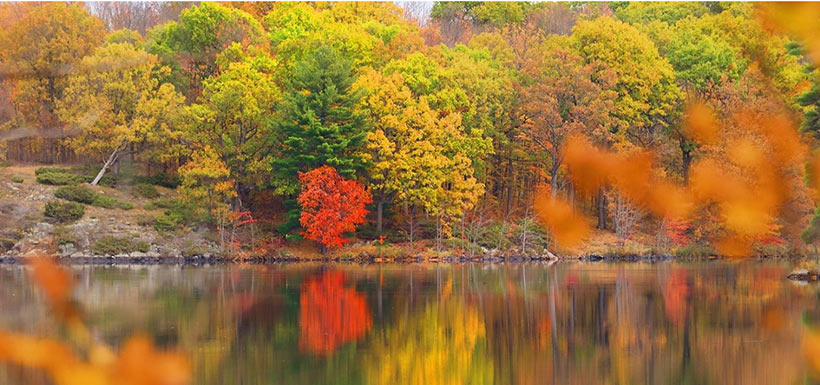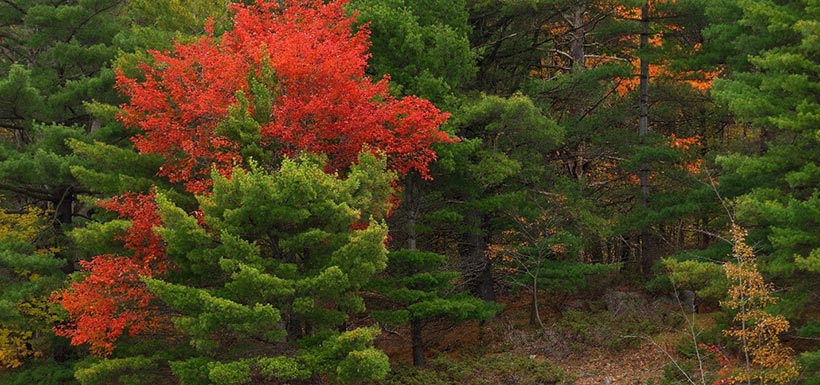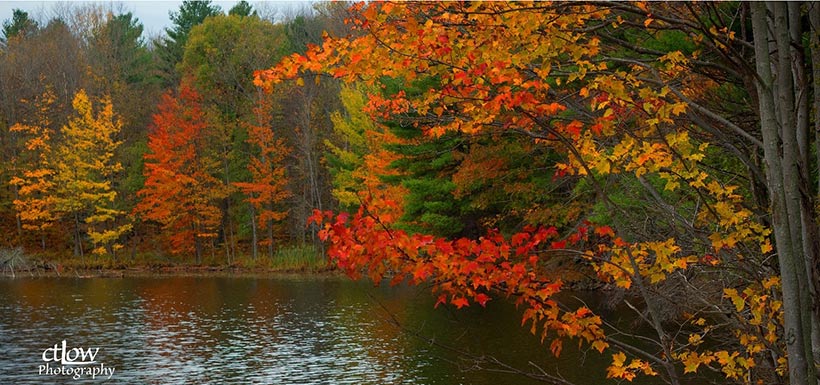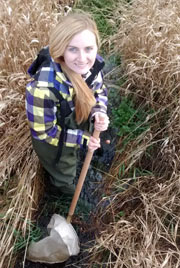Nature perspectives through art
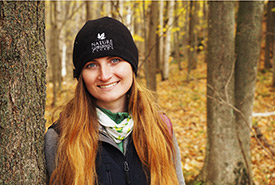
Megan Quinn, conservation biology coordinator in Ontario (Photo by Charles T. Low Photography)
I am not an artist by any stretch of the imagination. Don't get me wrong; I do like art. I was the high school student who spent her evenings in the art room, trying to build canvases that didn’t fall apart, and twist wires into the shape of trees. I eventually found that my artistic voice was better suited to writing, so art, in the traditional sense, is something I haven't thought about in a while.
As a conservation biologist with the Nature Conservancy of Canada (NCC), I'm lucky to spend my time working in some of the most beautiful areas of eastern Ontario. Even though it's quite literally my day job, I never get tired of the views. Although, I will admit that I am guilty of taking it for granted, or brushing it aside, because I have work to do.
When I'm doing field work, I'm looking at things very literally. If I'm classifying an ecosystem, then I'm looking at the trees, shrubs and plants to identify what species they are. If I'm surveying species at risk, then I'm looking for specific clues to lead me to what I'm searching for. A lot of the time I’m really looking for the problems in nature: Where is the next invasive species I need to map? Are there rubbish piles I need to clean up? This doesn’t leave much time for admiring the world around me.
Over the past few weeks, seemingly unintentionally, I've been surrounded by artists who see the natural world a lot differently than I do. I was pleased to find that it has really changed my perspective on nature and how we interact with the environment around us.
It started with an invitation to the Art of the Plant exhibit at the Canadian Museum of Nature in Ottawa, where I attended a talk about how nature and art can work together for the sake of conservation. Looking at paintings of the native plants that I see on a daily basis reminded me of how beautiful they really are. I don’t often take the time to look at an individual sugar maple leaf, but after seeing the paintings, I did spend a little longer observing the details of the species around me the next time I was out doing field work.
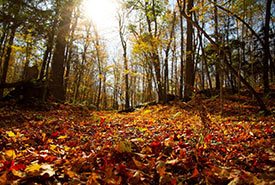
A forested area in the Ottawa Valley Natural Area (Photo by NCC)
The following week, I took NCC’s Ontario Region development and communications assistant, Robin Lawson, to photograph properties in the Ottawa Valley Natural Area. I’m not normally the one in front of the camera — mostly because when I’m working there’s likely to be a few twigs, some leaves and maybe a stray insect in my hair — but Robin’s pictures captured the joy I felt being in the middle of the woods.
She also taught me some perspective. I was hiking along a trail, eagerly talking about the dried up vernal pools we were passing, only to turn around and find her lying down in a layer of crunchy leaves, getting a shot of the canopy (I would recommend checking for poison ivy before trying this specific technique). She got me to slow down and look at the view as a whole, instead of chopping it up into individual species. We also found ourselves looking back in the direction we’d walked, because quite often, the perfect shot was behind us all along.
My final artistic adventure was with professional photographer Charles T. Low. I took him to see the autumn colours in the Loughborough Wilderness Block, a series of properties in the Frontenac Arch Natural Area. When I’m taking photographs at work, it’s usually a blurry picture on my phone of an unknown species I want to identify later. Charles’s passion for colour and perspective in his images really got me to see how beautiful nature can be. Through the use of reflection and depth, he turned what could have been ordinary pictures of vegetation into images that evoke everything I love about working in this part of the world. I will let his pictures speak for themselves.
In reality, I can’t spend all of my work day admiring the beauty of nature. As much fun as it would be to study the colours of every leaf, I do have stewardship tasks that I have to accomplish. But that doesn’t mean I can’t incorporate a deeper appreciation for art in the work I do.
I’m a firm believer that we all see the world a little differently. Whether it’s through a microscope, through binoculars, behind a lens or on a canvas, I think these perspectives can bring us together with a common goal: appreciating and protecting the natural spaces around us.

